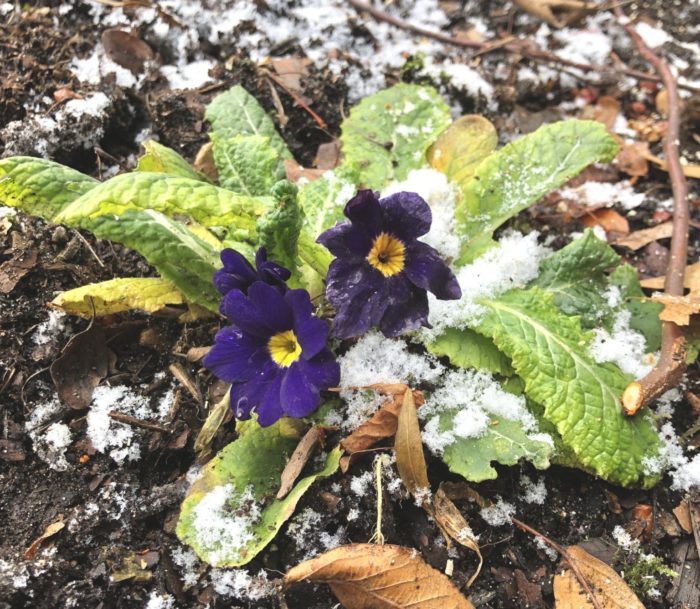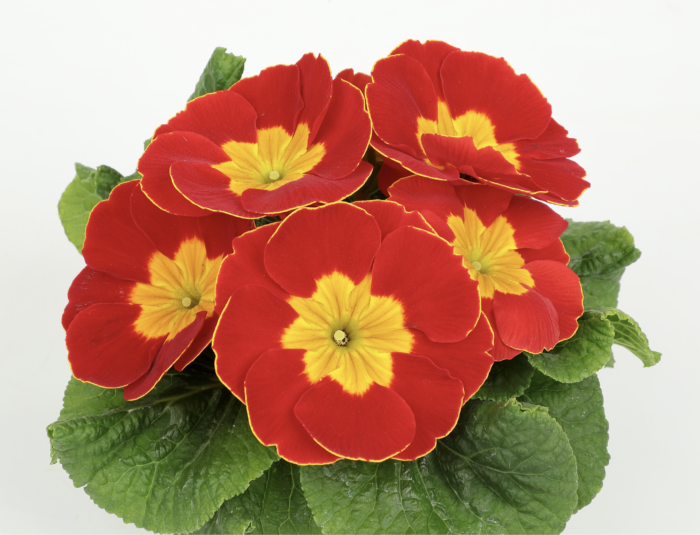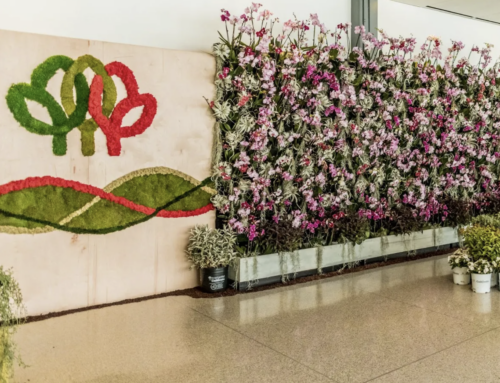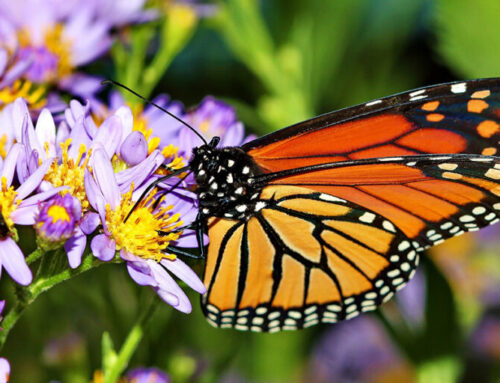We Propose – the Primrose
When you spot something actually blooming in an opening in the Michigan winter snow, one is compelled to take a closer look. The amazing little plant is Primrose (Primula acaulis, P. vulgaris, etc.). It’s one of the first perennial flowers to bloom in spring and produce an array of bright, vivid colors. The Primrose plant is versatile, where heat is more extreme or where the winters are quite cold. Because of this, it is effectively used an annual for seasonal color.

Let’s take a closer look at Primrose, a resilient little plant. First, note that it has its fair share of legends and lore, a quality I truly appreciate in a plant. I don’t feel as obligated to spin my own folklore to spark and hold the interest of the average non-botanical person or those raised void of Harry Potter. The Primrose has roots in Europe and grows wild in meadows, hedgerows, and the edges of bogs and streams. Researching roots of my own ancestry, it appears the Celts in Ireland considered the Primrose sacred and a key to heaven.
In addition to the magic, were you aware it is edible?
Irish folklore contends upon eating a flower, you may see a fairy. Though not in a hurry for a Primrose salad, who would pass on a glimpse of Tinkerbell and friends?
Primula is a large genus containing over 400 species. Numerous Primroses are suitable for gardens, but for the sake of time and space, we’ll focus on English Primrose (Primula acaulis, P. vulgaris). This species is common and adaptable to much of the US. We can explore other primula sources in the future, but today we consider a new series from Sakata, “Princessa”.

The Princessa series (Primula acaulis) is a breakthrough in bigger, bolder blooms – It’s nearly twice the size of the standard English Primula.
This series is dependable for early blooming, beating the standard Primrose by 5+ days. The color line-up of (7) consists of blue, golden, pink, rose, scarlet, white and a mix of the above. Consider it suitable in mass bed plantings, containers, and baskets. Like any Primrose, avoid direct, hot summer sun. A notable bonus, the Princessa series is not as hassled by the heat of summer when most Primrose fade or struggle with blossom drop.
Though it is not to be assumed Primroses can be found blooming through the snow on a routine basis, it is cold hardy to Zone 4, which is -30 F. This is not too bad for a magical little plant that is grown from North Dakota to Florida. Maybe that is part of its magic.
-Rob McCartney, Horticulturist
Please feel free to contact me with any questions or for more info at:



